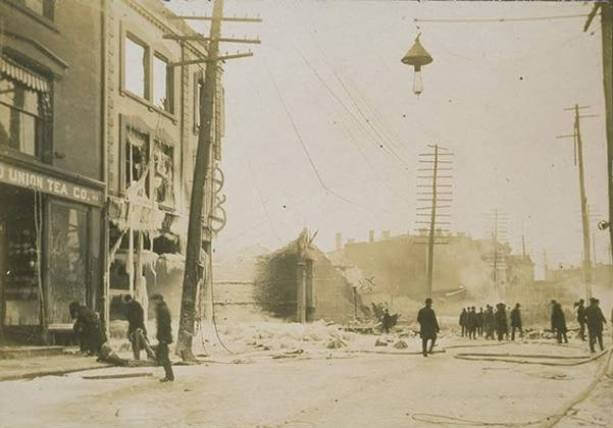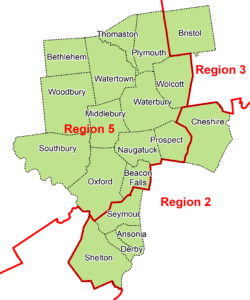The NVCOG encourages regional cooperation and facilitates communication among municipalities, neighboring councils of governments and state agencies dedicated to public health and safety. To this end, NVCOG participates in:
- State of Connecticut Regional Emergency Planning Teams (REPT) / Emergency Support Function (ESF) 1 – Transportation
- State of Connecticut Statewide Citizen Corps Council (SCCC) / Community Emergency Response Teams (CERT)
- Naugatuck Valley Emergency Planning Committee / Citizen Corps Council (EPC)
- Pre-Disaster Mitigation Planning
The State of Connecticut Division of Emergency Management and Homeland Security (DEMHS) partners with State agencies and Non-Governmental organizations to coordinate emergency preparedness and response activities. This collaboration supports local governments and their residents in responding to disasters and emergencies. The NVCOG is one such DEMHS regional emergency management partner.

Regional Emergency Planning Teams (REPT)
Regional emergency partners are organized into Regional Emergency Planning Teams (REPT). There are five REPT emergency planning regions in the State of Connecticut which are overseen by DEMHS. The REPT’s each create Regional Emergency Support Plans for their regions to more effectively and efficiently respond to disasters and emergencies.
The NVCOG municipalities are located in three of the five REPT regions:

Emergency Support Functions (ESF)
The REPT’s are further organized into emergency support function (ESF) committees, such as public communication, fire, emergency management, transportation, and public works, to coordinate responder functions across municipal boundaries.
The NVCOG participates in ESF-1 (Transportation) in the REPT 5. The purpose of ESF 1 is to develop and implement a system of resources and response capabilities that facilitates communication concerning transportation issues and activities during a major disaster, including natural and human-made. Traffic incident management is one such transportation issue and identification of Diversion Routes one such activity.
State of Connecticut Statewide Citizen Corps Council (SCCC) / Community Emergency Response Teams (CERT)
The SCCC oversees training and funding for the CERT’s which consist of volunteers who are trained to support local emergency response agencies. Operating under the directive of the municipal emergency management director, a CERT can assist a neighborhood when professional responders are not immediately available. The NVCOG participates as an SCCC voting member.
Naugatuck Valley Emergency Planning Committee / Citizen Corps Council (EPC)
Regional coordination among NVCOG members occurs at the bi-monthly meetings of the Emergency Planning Committee / Citizens Corps Council. Fire, Police, EMS, emergency management directors, and others participate in these efforts. This is a forum for local emergency management directors to discuss training and equipment resource needs, and suggest REPT funding allocations. Please see the Calendar for the latest meeting time and agenda.
Pre-Disaster Mitigation Planning
Mitigation is the effort to reduce loss of life and property by lessening the impact of disasters. Hazard mitigation occurs at both the state and local levels. Municipalities must prepare pre-disaster mitigation plans for hazard identification and risk assessment and to identify actions to reduce their impact. The resulting plan enables the municipality to be eligible for certain Federal Emergency Management Agency (FEMA) grants to lessen these risks. Subject to cost analysis, eligible projects include property acquisition, elevation of structures, and revision of local regulations.
The State of Connecticut DEMHS Hazard Mitigation Unit oversees the distribution of FEMA hazard mitigation grants. Pre-disaster mitigation plans must be updated every five years. NVCOG is in the process of securing funding to create one region-wide pre-disaster mitigation plan which will update and include all 19 member municipal plans.
Staff Contact:
Drew Baklik
Director of Municipal Affairs
dbaklik@nvcogct.gov
